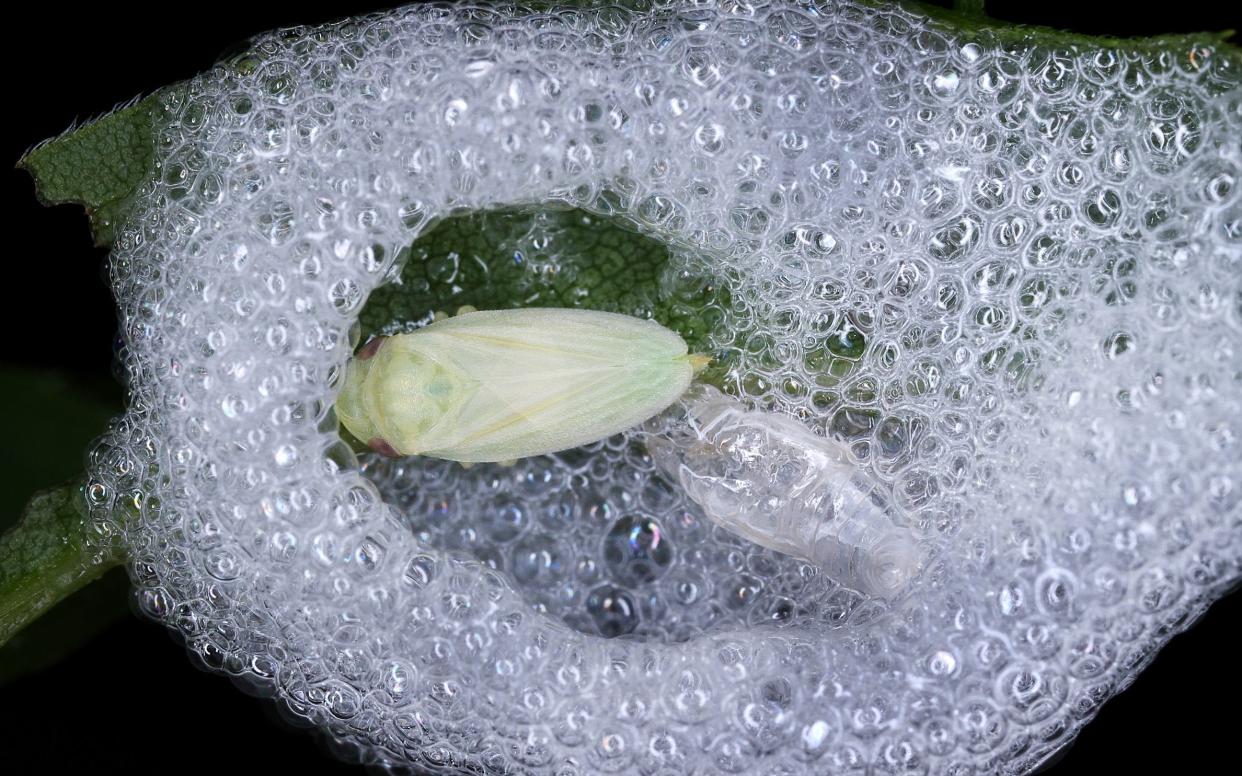Gardeners urged to search for foam on their garden plants to stop European pest that could destroy Britain's trees and plants

Gardeners have been urged to look out for white foam on their plants as the RHS puts plans in place to stop a European pest which is responsible for the destruction of millions of trees in Italy.
The Royal Horticultural Society and Defra have identified Xylella fastidiosa as one of the most pressing concerns when it comes to UK plant health — they fear the disease, which decimates trees and popular garden plants, could come to the country imminently.
If found in the UK, all host plants within 100m would need to be destroyed and there would be immediate restrictions on movement of specified plants within a 5 km radius for up to five years - striking a death knell for surrounding nurseries and garden centres.
The plant charity, which is working with University of Sussex and Forest Research, needs thousands of volunteers to help map the distribution of spittlebugs, one of the chief carriers of Xylella, that can be found in gardens, meadows, grasslands and woodlands from April to late June.
These bugs, which when infected spread the disease from plant to plant, all produce whitish, frothy blobs of spittle on leaves and branches. This helps them to be spotted by horticulturalists.

Each volunteer is being asked to report sightings of spittle, whether in their garden or on plants elsewhere, online through a site called iRecord after registering.
Volunteers will need to report their name, the location the spittle was seen and when, and most importantly the species of plant on which it was found. This information will help researchers understand how Xylella might enter and spread in the UK.
While it is not yet found in the UK, the bacteria is causing worry for ministers and horticulturalists because if it does spread from Europe, it affects over 500 different plants, so is harder to wipe out than a host-specific pest.
The disease is already established in areas of Italy, France and Spain and has resulted in the death of millions of olive trees in southern Italy. There are worries that it could come to the UK because of the plant trade, and decimate our forests.
The bacteria affects popular garden plants and trees including lavender, oak, oleander, rosemary and flowering cherry. It prevents water from being transported from the roots to leaves.
Gerard Clover, Head of Plant Heath at the RHS, said: “Xylella remains our number one concern but is not an issue bound by the garden fence. Understanding how and where the disease’s primary vectors move is fundamental to understanding how we can stop the devastation of our gardens and environment should it arrive.”
Alan Stewart, Principal Lecturer at the University of Sussex, added: “Records of spittle submitted by the public will help us to build up a picture of where spittlebugs are found, what plants they feed on and how much they move around. This information will be essential for deciding how best to respond should Xylella arrive in the UK."

 Yahoo News
Yahoo News 
